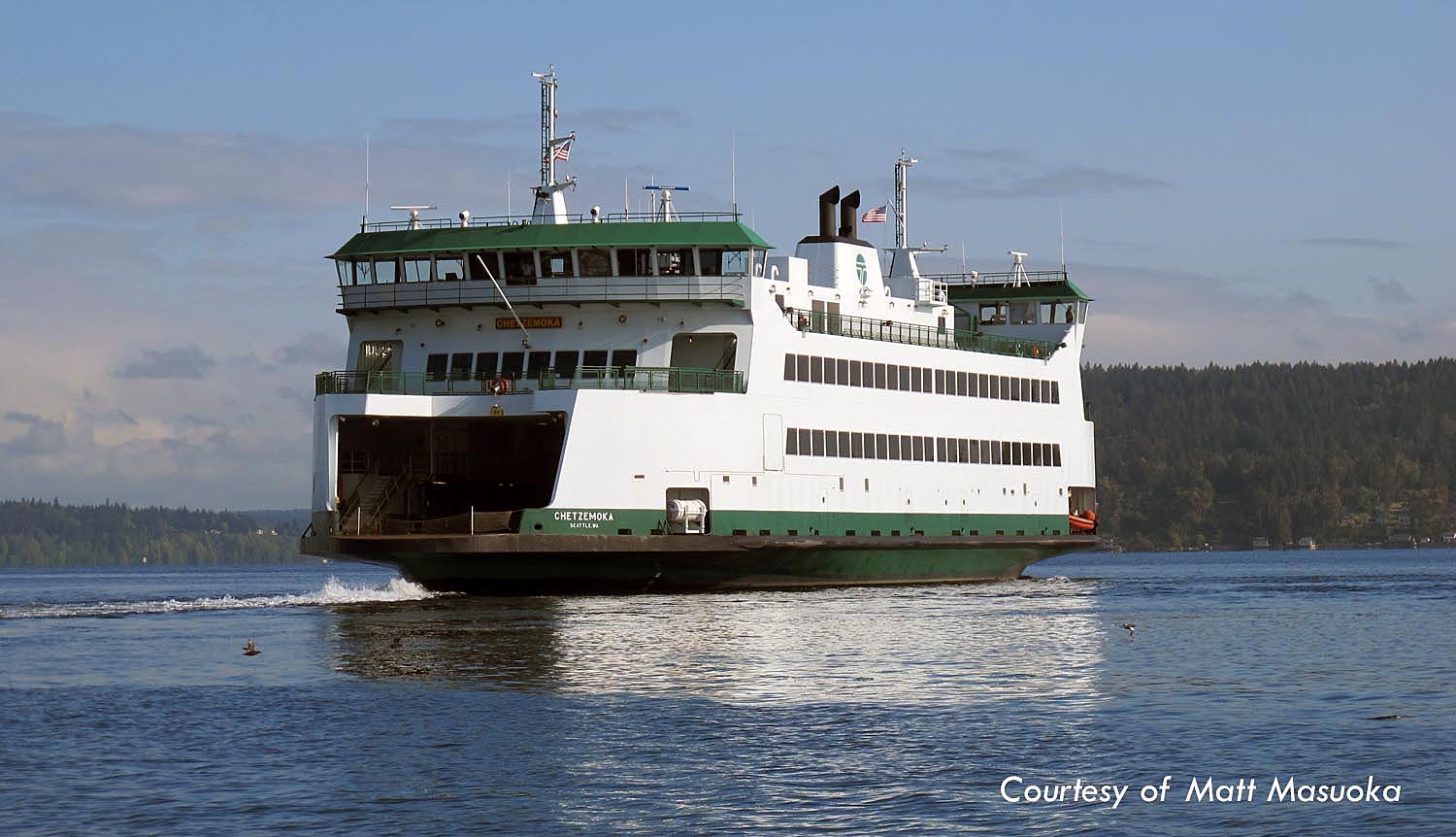Chetzemoka (II)

CHETZEMOKA (II)
CLASS: Kwa-di-tabil
BUILT/REBUILT: 2010, Seattle, WA.
OFFICIAL NUMBER: 1228643 CALL SIGN: WDF5502
L/B/D: 274 x 64 x 11 GROSS/NET TONS: 4623/1400 PASSENGERS/AUTOS: 750/64 cars
PROPULSION: Diesel SPEED: 16 knots
NAME TRANSLATION: namesake of both the S’Klallam chief and the first ferry of the same name
FINAL DISPOSITION: In service, 2024.
HISTORY
After much public support the first ferry in the new 64 car ferry was named Chetzemoka. The Jefferson County Historical Society led the charge to have the new ferry named in honor of both the famous S’Kallam chief and the Wood-Electric ferry of the same name. There was widespread support for the name by visitors to EvergreenFleet.com as well, many of whom let WSF and the DOT let them know of their support for the name.
For the record, Chetzemoka was a S’Klallam Chief. The S’Klallam were led by Chetzemoka’s older brother S’Hai-ak when white settlers first arrived in their territory around 1851 and it was he who granted permission for their settlement, Port Townsend. When S’Hai-ak drowned soon after, Chetzemoka succeeded to leadership of the S’Klallam. Chetzemoka was friendly toward the new settlers, who dubbed him “Duke of York.” In the early 1850’s he traveled to San Francisco, which impressed Chief Chetzemoka and solidly placed him as allied to the Americans. He was instrumental in resolving the 1868 Dungeness Massacre when S’Klallam raiders killed 17 Tsimshians. Chetzemoka died at about age eighty.
In 1904 the Port Townsend city park was named in his honor.
The Chetzemoka finished fitting out in July 2010 and started to undergo sea trials. It was readily apparent that there was a problem–she shook harder than the Kalakala ever dreamed of, and this was with a five-blade prop installed.
WSF put some corrections on the software which smoothed out the vibration. Over the longer term, the fact that they replaced the composite shaft with one of stainless steel could have some bearing on the vibration issues. Other issues arose. It was quickly realized there is no way to properly clean the lower windows. All the ferries in the fleet have a catwalk to allow crews to get out and wash the windows when the ferries are docked. For unknown reasons, none was built on the Kwa-di-Tabils. In addition, the rub rail—essentially the bumper around the ferry—was constructed too small to be of any use, which resulted in a cracked window while at dock. The ferry went back to the yard and had “bumpers” put on until the rubrail until permanent replacements were added later.
With much ceremony, the ferry went into service on 15 November 2010. After spending over a year on the Port Townsend-Keystone run, it was announced to the dismay of many in Port Townsend that the ferry would be reassigned to the Point Defiance-Tahlequah run. This was done, according to management, because of the propulsion systems being identical on the Salish and Kennewick so as to make it “easier for the crews.” This is an idiotic notion. Masters and mates at WSF are trained to operate any vessel in the fleet, and have to change boats frequently. The Chetzemoka was going to be assigned to Point Defiance all along because the Salish and Kennewick are more suited to Port Townsend route with their variable pitch propellers. For WSF management to imply any other reason was disingenuous and insulting to the crews.
The move to Point Defiance was not without issues. The crossing, which is just over a mile, does not allow for the engines to operate in the manner in which they were designed. Exhaust residue built up in the stack, and the stack promptly caught on fire, pulling the Chetzemoka out of service for a time.
The issue has been resolved, and the ferry has been on the route with no similar problem since—but it still burns more fuel than her much older (and much missed) predecessor the Rhododendron did.